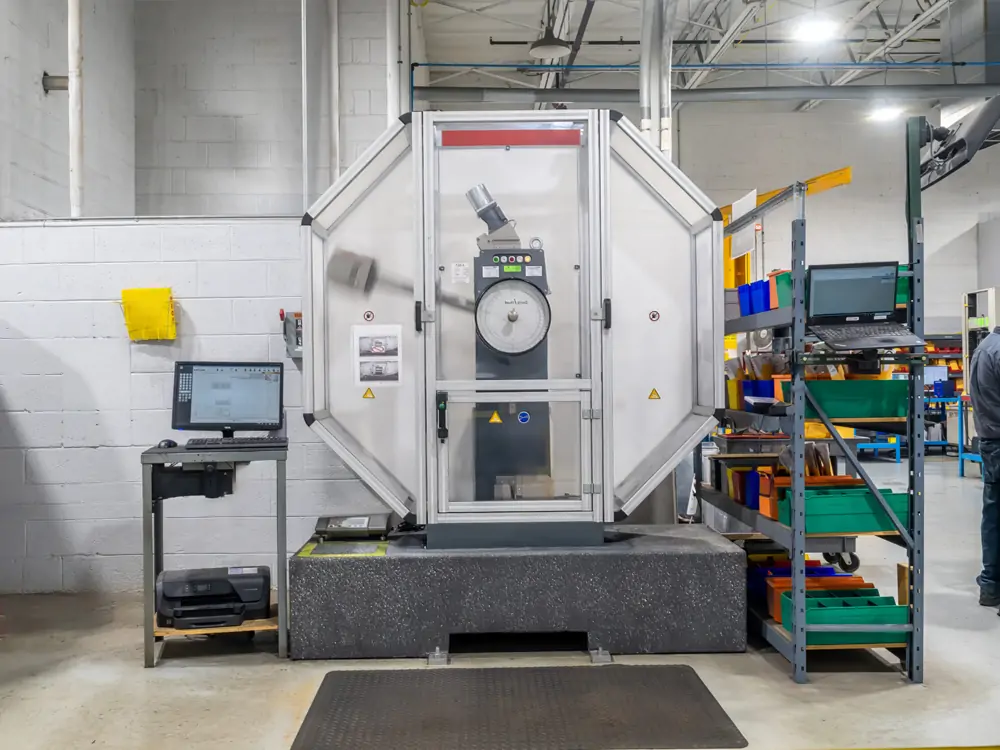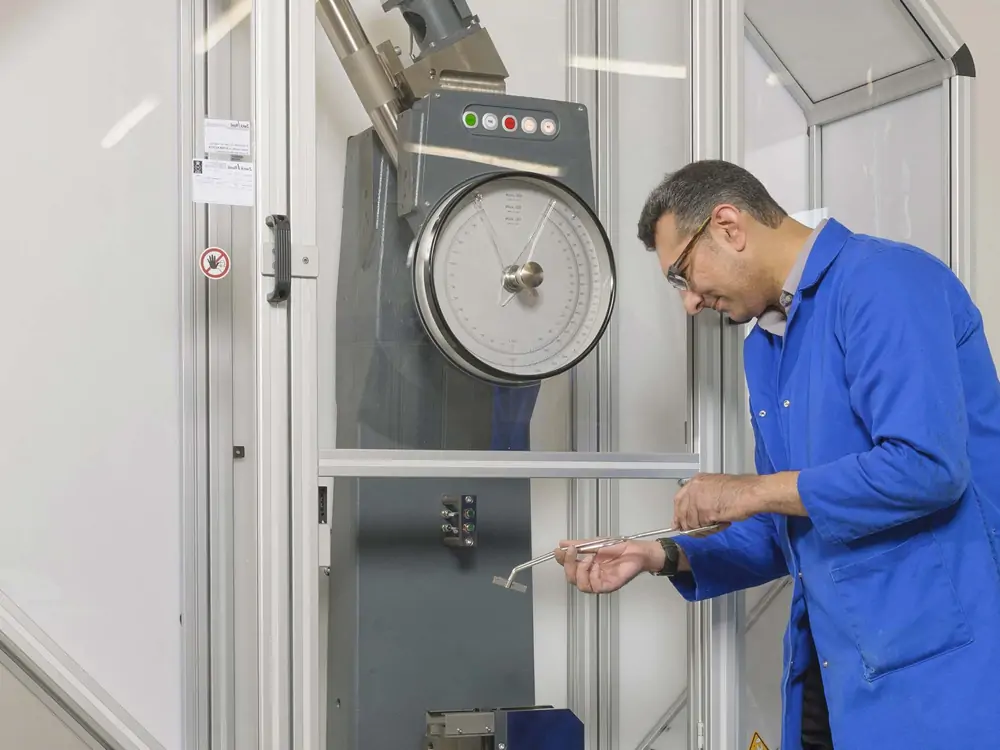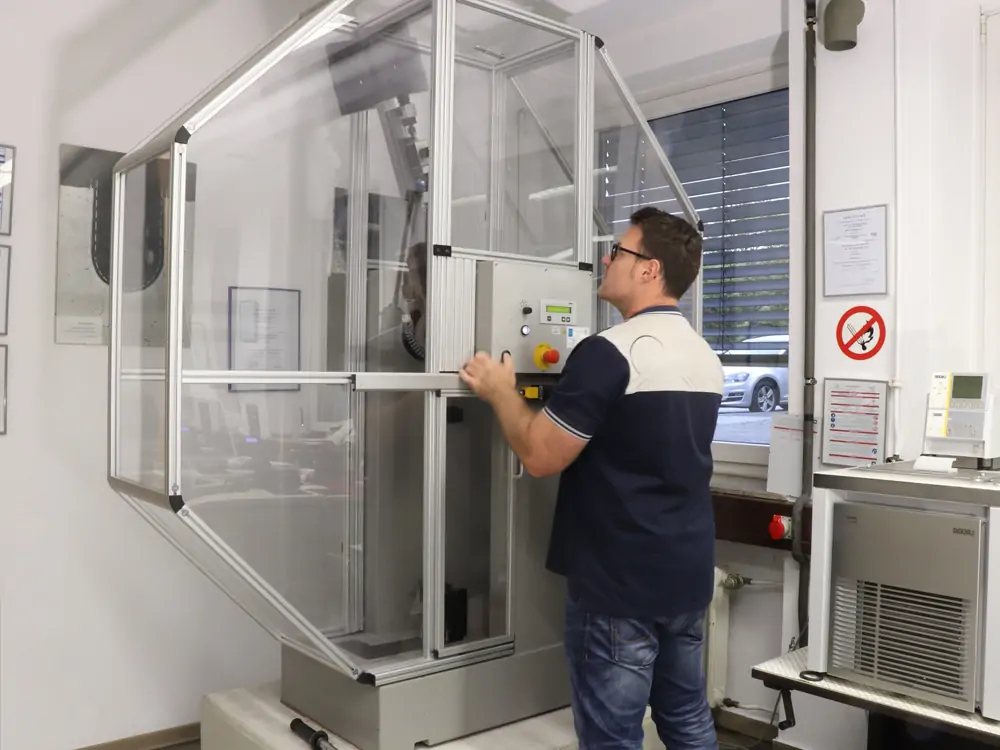The Charpy impact test is essential for material toughness testing. Conducted across various industries, this test provides critical insights into how a material withstands sudden, dynamic loads. In this guide, we will delve into the essence of the Charpy impact test, exploring the purpose, procedure, applications, and significance of diverse materials.
Understanding the Charpy Impact Test: A Primer
Defining the Charpy Impact Test
The Charpy impact test is a standardized and widely adopted procedure. It measures a material’s resistance to sudden impact. This crucial assessment provides valuable insights into how well a material can absorb and withstand the energy generated during rapid and dynamic effects. This test mimics real-world scenarios where unexpected forces can act on them by subjecting materials to controlled impacts. It will help to check their toughness and durability.
Significance Across Industries
The significance of the Charpy impact test reverberates across diverse industries. These include construction, manufacturing, and engineering. Its use in quality control and material selection processes shows its importance. This test ensures that materials used in various applications fulfill toughness and resilience standards. This test is not merely a laboratory procedure. It is a practical means of predicting how materials will perform in the face of unexpected stresses in the real world.
Ensuring Structural Integrity
The significance of the Charpy impact test reverberates across diverse industries. These include construction, manufacturing, and engineering. Its use in quality control and material selection processes shows its importance. This test ensures that materials used in various applications fulfill toughness and resilience standards. This test is not merely a laboratory procedure. It is a practical means of predicting how materials will perform in the face of unexpected stresses in the real world.
Quality Control and Material Selection
One critical role of the Charpy impact test is its application to quality control processes. It determines whether materials are sufficiently strong and can withstand unexpected impacts. This test also helps manufacturers and engineers choose materials. Charpy impact test data advises application-specific choices and ensures that the selected materials are durable.
Dynamic Insights into Material Behavior
Beyond measuring resistance to impact, the Charpy impact test offers dynamic insights into how materials behave under stress. The test allows for predicting a material’s fracture behavior by introducing a controlled notch or pre-crack in the specimens. This predictive aspect helps uncover material structure weaknesses. It enables proactive measures to address these vulnerabilities in the design or selection process.

The Basics: How the Charpy Impact Test Works
Essence of the Pendulum Swing
At the heart of the Charpy impact test is the captivating swing of a pendulum. In this planned process, the pendulum is released to strike a notched or pre-cracked specimen. The material fractures under impact, allowing scientists and engineers to see how it reacts to abrupt dynamic stresses. The pendulum’s swing height before and after the collision is measured. This helps quantify material energy absorption during testing, revealing critical insights into its toughness and resilience.
Visualizing Fracture Dynamics
As the pendulum strikes the specimen. It sets in motion a sequence of events leading to material fracture. This controlled fracture event lets researchers see and analyze fracture mechanics. Material scientists, engineers, and quality control experts can learn how materials react to sudden impacts from the Charpy impact test’s fracture initiation to propagation.
Measuring the Impact of Energy
A defining feature of the Charpy impact test is its ability to quantify impact energy in joules. The concept is elegantly simple yet informative. The pendulum swing height before and after impact is measured correctly. The difference between these two heights is the material energy absorbed during impact. This numerical representation becomes a vital indicator of the material’s toughness. It offers a quantitative measure of its ability to absorb sudden shocks without succumbing to fracture.
Key Indicator: Material Toughness
The crux of the Charpy impact test lies in interpreting the measured impact energy. A higher absorbed energy signifies better toughness. This indicates that the material can absorb a lot of power without fracturing. It is desirable in situations where materials experience sudden and dynamic forces. The Charpy impact test shows that materials with higher toughness can withstand unexpected stresses and impacts in a building or machinery component. This will improve product reliability and safety.
Practical Insights into Material Performance
The measurement of impact energy in the Charpy test goes beyond mere numerical data. It translates into practical insights into how a material performs in real-world scenarios. Industries that use materials exposed to unpredictable influences enjoy this insight. The Charpy impact test informs material selection, design, and quality control by analyzing structural component reliability in buildings and machinery lifetime in manufacturing.

Why the Charpy Impact Test Matters: Applications Across Industries
Construction Industry
In construction, materials support structures and experience dynamic stresses. The Charpy impact test emerges as a crucial evaluation tool. The test assesses a material’s ability to resist sudden impacts. A consideration of paramount importance in structures where safety is non-negotiable. This test ensures that materials used in architectural elements can survive unanticipated forces.
Ensuring Safety in Structural Elements
The Charpy impact test is used in construction to ensure structural element safety. Construction safety and reliability depend on the materials’ shock resistance. The Charpy impact test helps the building sector find robust materials. It contributes to the creation of buildings that stand the test of time.
Manufacturing Sector
The dependability and durability of machinery components are crucial in manufacturing. The Charpy impact test becomes an integral part of the quality control process. Manufacturers can assess the toughness of materials used in machinery components. Product makers use this test to ensure structural elements can withstand dynamic forces.
Engineering and Infrastructure
In the vast landscape of engineering and infrastructure projects, this test plays a pivotal role in assessing the impact resistance of materials. This Charpy impact test provides insights into the structural components of infrastructure projects. Engineering focuses on creating structures that withstand the test of time. The Charpy impact test is used to choose materials for these big projects.
Critical Role in Infrastructure Durability
The Charpy impact test helps important components last in engineering and infrastructure. Materials that withstand impacts are crucial to bridge structural integrity. Materials verified using this test ensure pipes’ durability under varied environmental impacts.

The procedure of the Charpy Impact Test: Breaking it Down
Preparing the Specimen
A notched or pre-cracked specimen is prepared, representing the material under evaluation. The notch introduces a controlled stress concentration. Mimicking real-world scenarios where materials might already have imperfections.
The Swing and Impact
The specimen is secured, and the pendulum is released to strike the specimen. The impact causes the material to fracture. The pendulum’s swing height difference is measured. It provides a quantifiable indicator of the material’s toughness.
Recording Results and Analysis
The results are recorded as energy values in joules. Analyzing these variables helps determine the material’s fit for specific uses. Higher absorbed energy often translates to enhanced material toughness.
Significance of the Charpy Impact Test: Ensuring Material Reliability
Evaluating Material Strength
The Charpy impact test is vital for evaluating a material’s strength under dynamic conditions. It offers a practical understanding of its performance when subjected to sudden impacts.
Predicting Fracture Behavior
It introduces a controlled notch or crack. The test allows for the prediction of a material’s fracture behavior. This helps detect and address design or selection flaws.
Quality Control Measure
Industries use the Charpy impact test as a quality control measure. They are ensuring that materials meet specified toughness standards. This is particularly critical in sectors where safety and reliability are non-negotiable.
Real-world Examples: The Charpy Impact Test in Action
Assessing Steel Toughness
The steel industry uses the Charpy impact test to measure toughness. It is crucial for applications where steel must withstand sudden impacts, such as in construction or heavy machinery fabrication.
Polymer and Plastics Testing
The Charpy impact test is equally significant for polymers and plastics. It helps determine how well these materials resist sudden forces, making them suitable for packaging and automobile components.
Interpreting Results: What is a Good Charpy Rating?
High Absorbed Energy
A material with a high absorbed energy value is robust and can take a lot of impact energy without breaking. This is desirable for applications where dynamic stress is a constant factor.
Low Absorbed Energy
Conversely, a low absorbed energy value signifies reduced toughness. Materials with lower toughness may be prone to fracture under sudden impacts. It is less suitable for applications requiring resilience.

Industry Standards: Charpy Impact Test Regulations
The Charpy impact test adheres to standardized procedures outlined by organizations such as:
- ASTM (American Society for Testing and Materials)
- ISO (International Organization for Standardization).
These standards ensure consistency and reliability in testing across industries.
Advancements in Charpy Impact Testing: The Future Perspective
Innovations in Testing Techniques
The Charpy impact test continues to evolve with advancements in materials science and testing technology. Testing innovations provide more precise and detailed insights into a material’s dynamic behavior.
Digital Impact Testers
The introduction of digital impact testers enhances precision and data analysis capabilities. Digital technologies ensure accurate swing height measurements and quick results, simplifying testing.
Conclusion: The Charpy Impact Test’s Enduring Relevance
The Charpy impact test is still used throughout sectors to assess material toughness, from construction and manufacturing to engineering and beyond. This test offers practical insights into how materials respond to sudden, dynamic impacts. Even as businesses change, the Charpy impact test is still a valuable and essential tool. It can ensure the structural integrity, safety, and reliability of materials shaping our modern world.